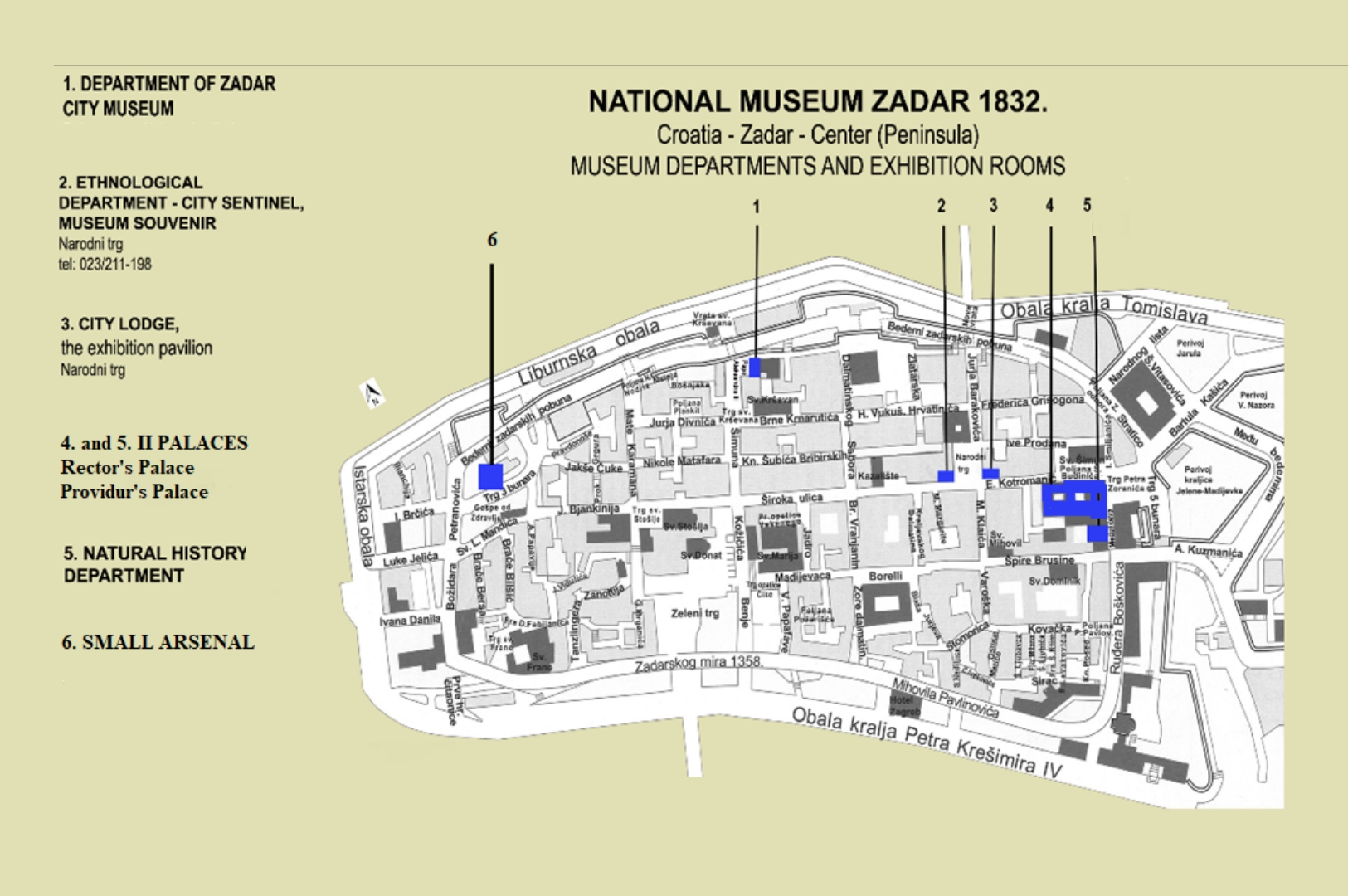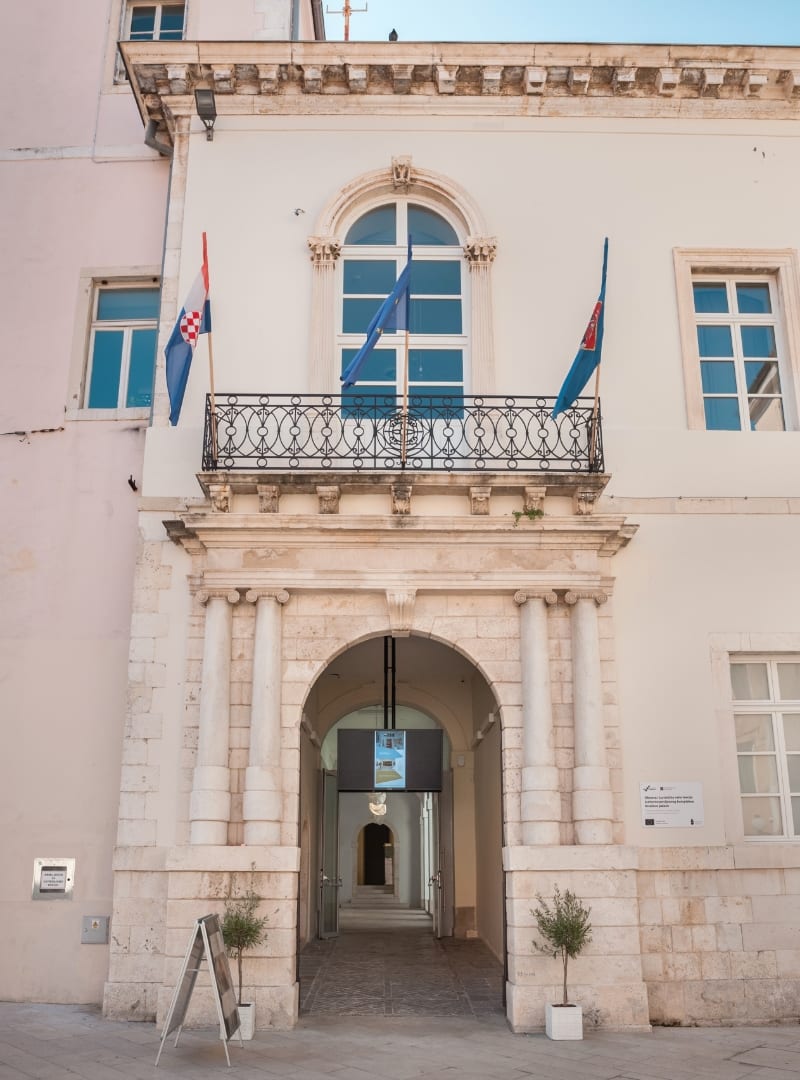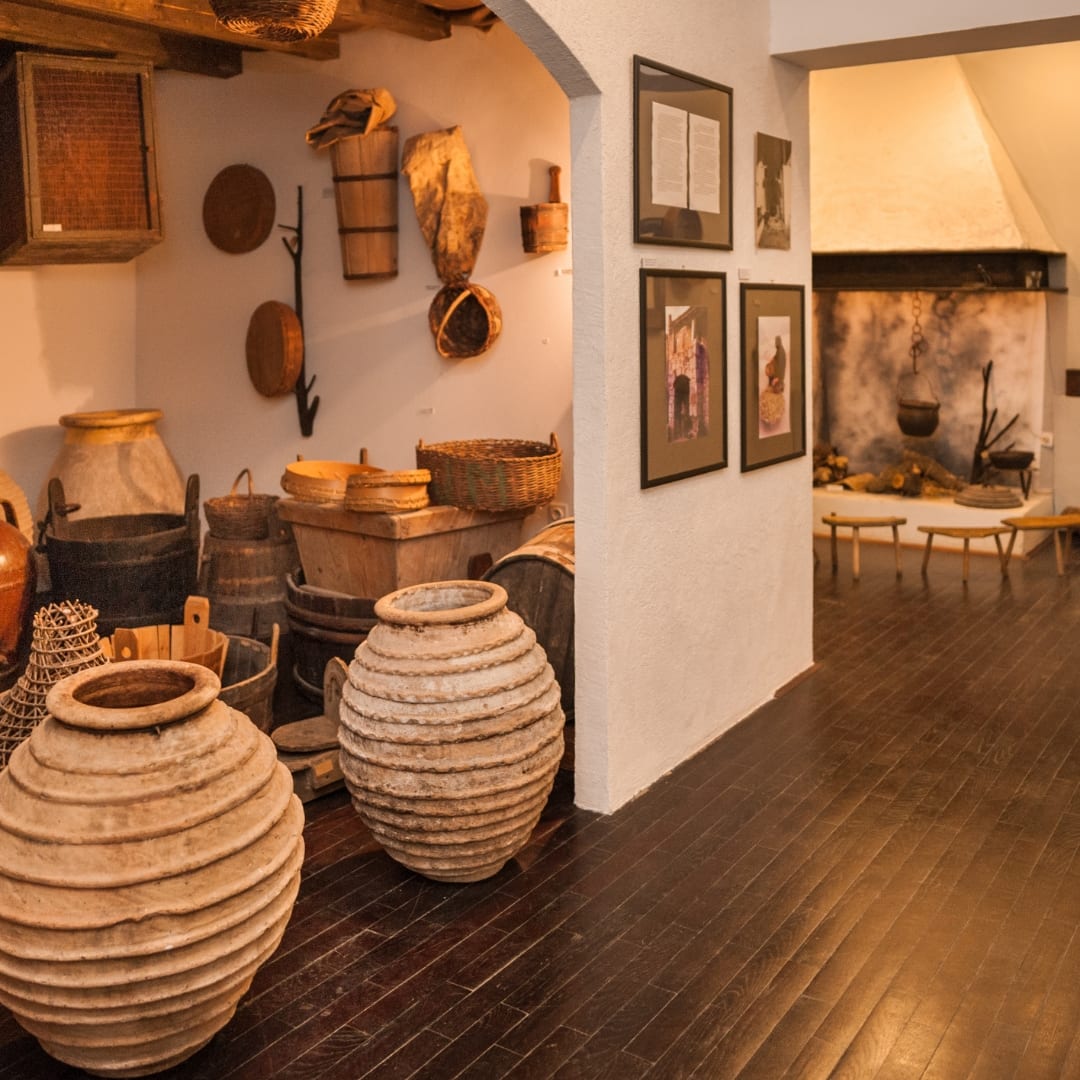National Museum Zadar
National Museum Zadar has been a participant in the development of public museum activities since 1832, and its holdings today number around 100 000 objects that represent the heritage and the identity of Zadar and Zadar Region. National Museum Zadar was established and founded in 1962 in legal form by merging four independent museum-gallery institutions which make departments of the Museum now days: Ethnological Department, Natural History Department, Department of Zadar City Museum and Gallery of Fine Arts, Educational Services, Documentation Services and Museum Library. However, Museum has its roots in Museo Nazionale established in 1832. The basic mission of today’s National Museum Zadar encompasses the systematic collecting, safekeeping, exhibiting, documenting and the professional and scientific processing of mobile and immobile objects of the civilizational, cultural and natural heritage that has come into being in the period since the 13th century down to the present day. The Museum is a or co-organizer of and host to various exhibitions staged by other institutions, professional and scholarly conferences, cultural manifestations, concerts, book promotions and workshops.
The Natural History Department bases its professional work on collecting, researching and exhibiting the flora and fauna of the wider Zadar area, which it presents at various exhibitions, often related to the topics of ecology and protected areas.
The Ethnological Department collects, preserves and researches the traditional heritage of the Dinaric and Adriatic cultural circles, and through various museum activities, such as exhibitions and workshops, it acts as a promoter of the traditional identity of the region. Since its inception, it has been located in the area of the City Guard.
Gallery of Fine Arts collects, preserves and researches artwork that presents the Croatian, especially Zadar, art scene. The fund has artwork mostly from the XVII-XX century however the famous Ugljan triptych is dated to XIII century. The largest part of the fund belongs to the 20th century.
Department of Zadar City Museum was created to collect, preserve and present the city’s cultural and historical heritage from the 13th century until today. It is located in a new building from 1962, created on the site of the former monastery complex of St. Chrysogonus.
Occasional exhibitions are organized mainly in the City Lodge, the Museum exhibition pavilion, while the Rector’s Palace and the Small Arsenal are new exhibition spaces. The Museum components Mali Iž Regional Cultural and Historical Collection (since 1978) and Veli Iž Regional Ethnographic Collection (since 1995) have been dislocated and can be found on the Island of Iž.
National Museum Zadar is located in the Zadar old city centre (peninsula) on several locations as seen on the map bellow.
Project development Museum Next
Gamification
Website of NMZ
www.nmz.hr/hr/






